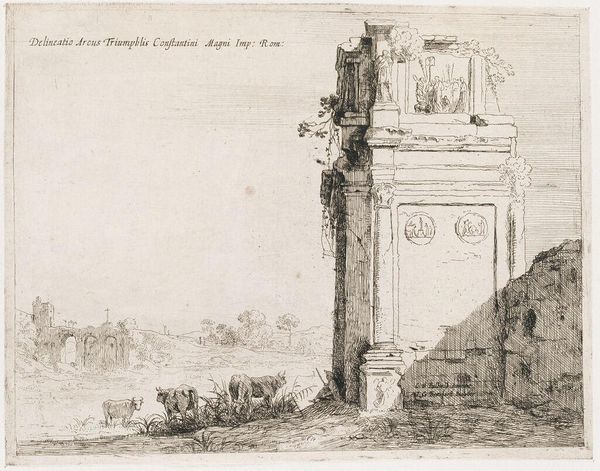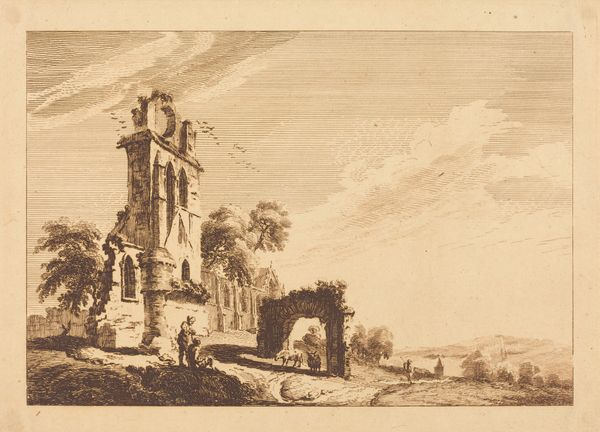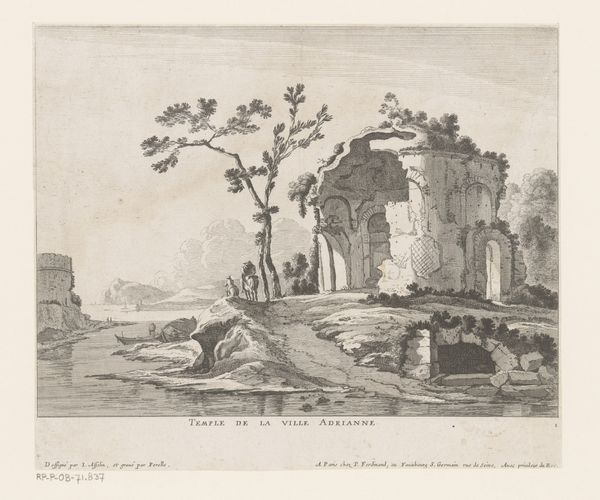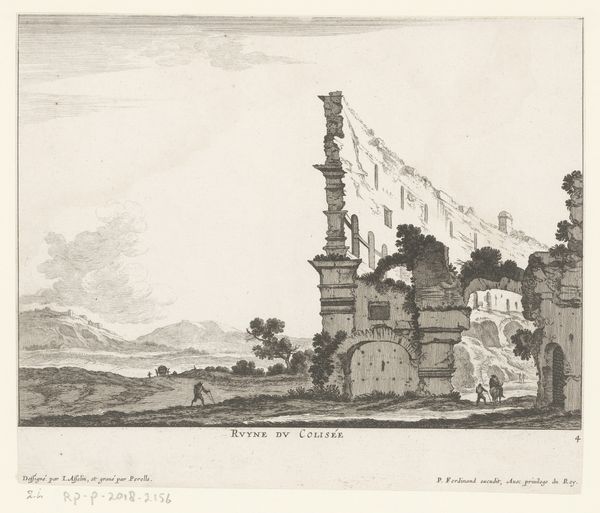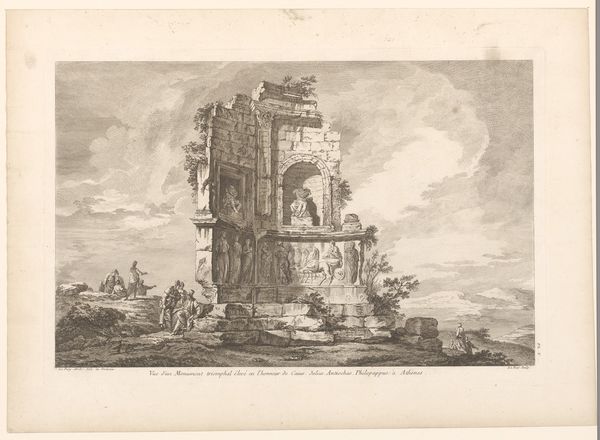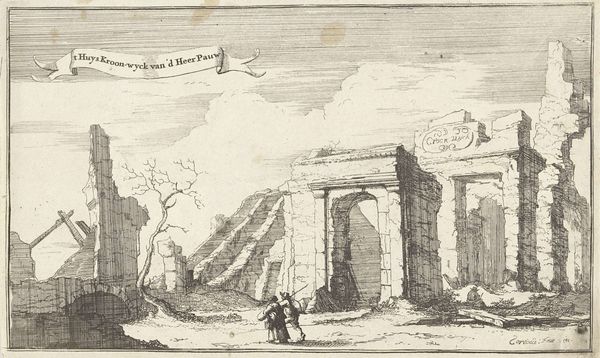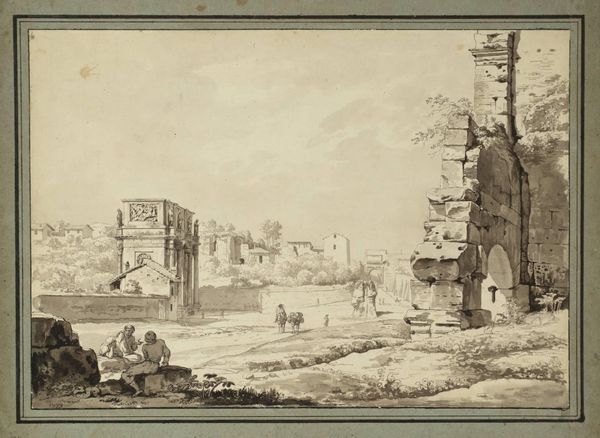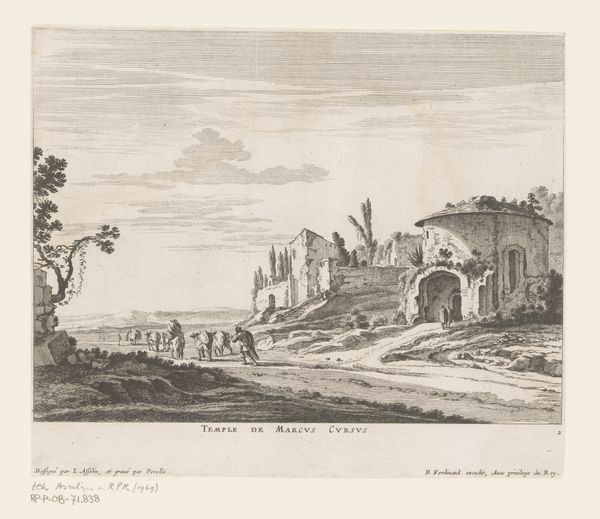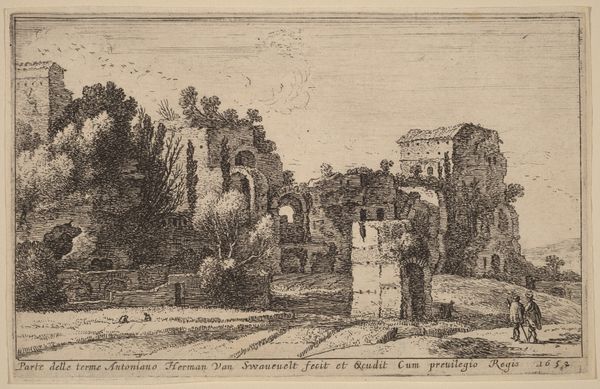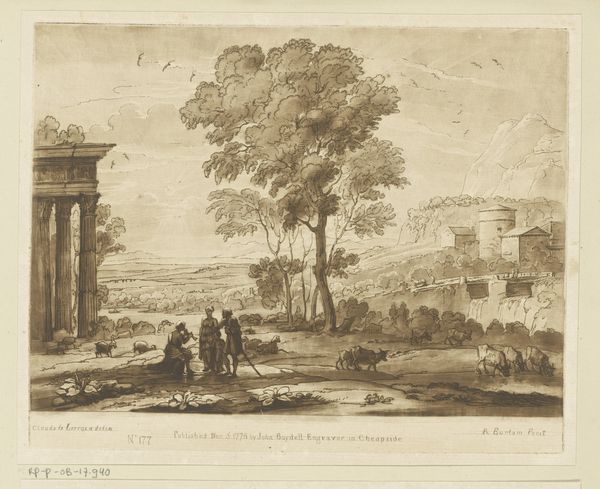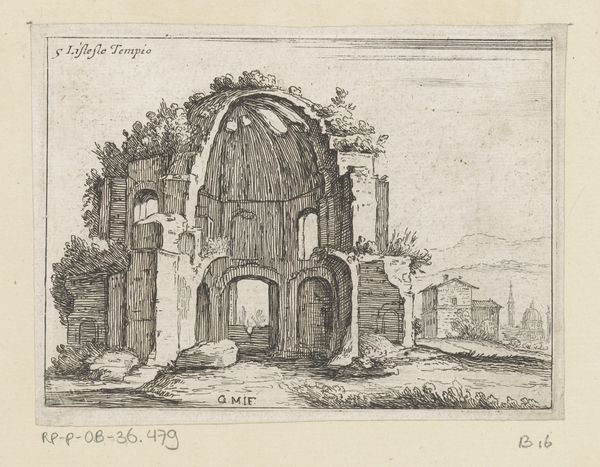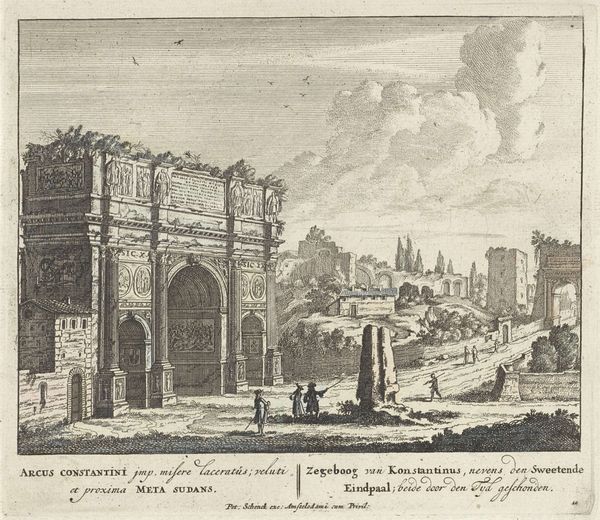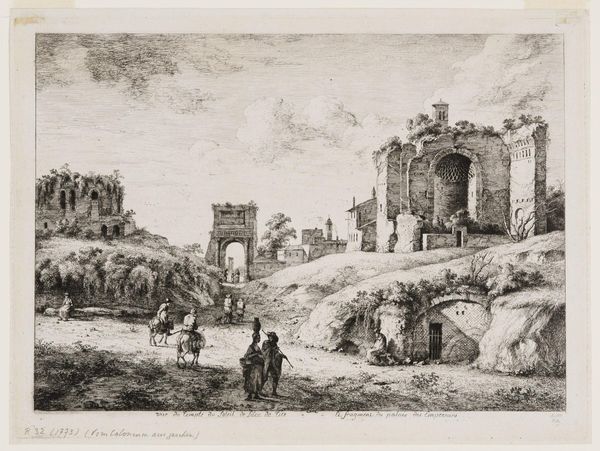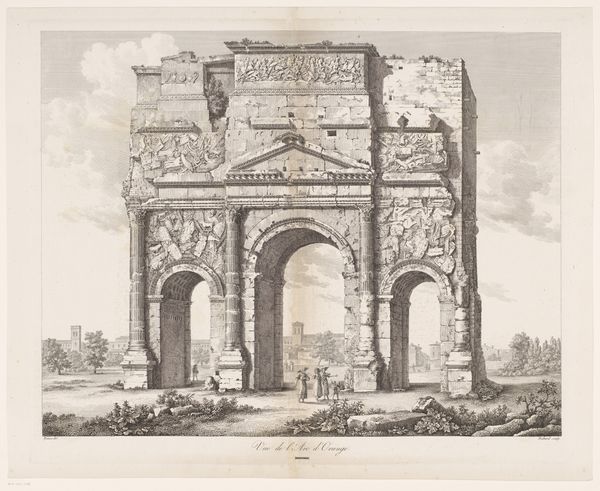
drawing, print, etching, engraving
#
drawing
#
baroque
# print
#
etching
#
landscape
#
cityscape
#
engraving
Dimensions: height 204 mm, width 263 mm
Copyright: Rijks Museum: Open Domain
Editor: Here we have Jan Gerritsz van Bronckhorst's etching, "Ruïne van Boog van Constantijn te Rome," placing us somewhere between 1613 and 1661. The scene depicts the ruins of the Arch of Constantine amidst what looks like a pastoral landscape. It's striking how the remnants of imperial grandeur are juxtaposed with grazing cattle. What symbols stand out to you in this piece? Curator: The ruin itself, the Arch, isn't simply stone; it's a vessel teeming with cultural memory. It speaks of power, victory, and the once immutable nature of empires. Note how nature reclaims the space, vines crawling over carved stone. This echoes the ephemeral nature of human endeavors, set against the enduring backdrop of the natural world. Do you notice the oxen in the foreground? Editor: Yes, they seem oblivious to the historical weight of the arch. Curator: Precisely. They symbolize the continuation of life, agriculture, and a cyclical rhythm unaffected by the ambitions and collapses of empires. The figures in the roundels above seem eroded and lost, like figures from a fading dream, or half-remembered gods. What might that signify? Editor: Perhaps the loss of specific stories, a forgetting of the original purpose and details. It speaks to a broader amnesia. Curator: Consider the artist's choice to present the Arch as a ruin rather than in its former glory. This very act of choosing the ruin reframes the past. Bronckhorst prompts reflection on legacy and on what persists through time versus what is lost. How does the Baroque landscape around it contrast or complement the message in the triumphal arch itself? Editor: It creates a poignant contrast between human ambition and nature's indifference, reminding us that even the most powerful structures eventually crumble and return to the earth. I now understand that Bronckhorst uses imagery here not just to depict, but to convey complex layers of cultural and historical understanding. Curator: Indeed, and the Arch's continued presence, even in decay, speaks volumes about the enduring power of symbols to transmit ideas and emotions across generations. A ruin remains a cultural text.
Comments
No comments
Be the first to comment and join the conversation on the ultimate creative platform.
